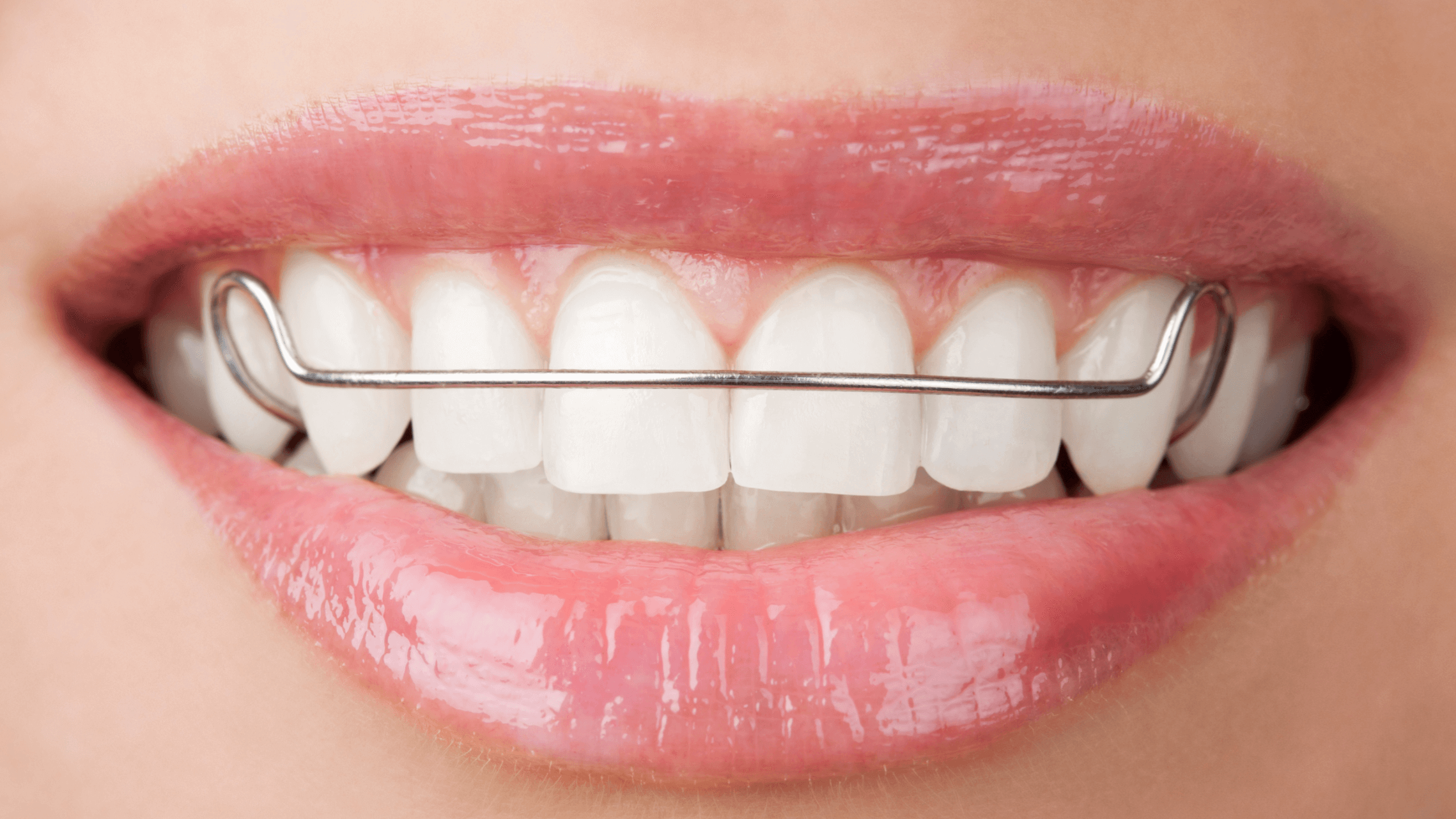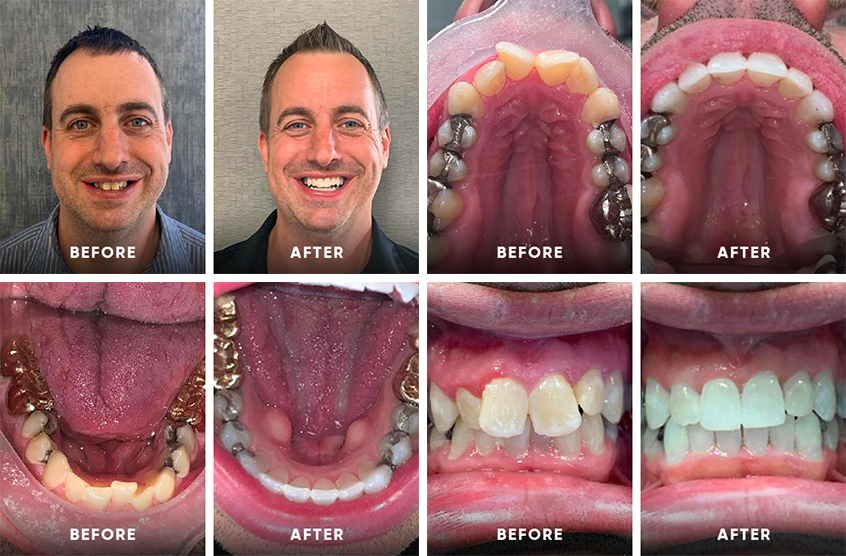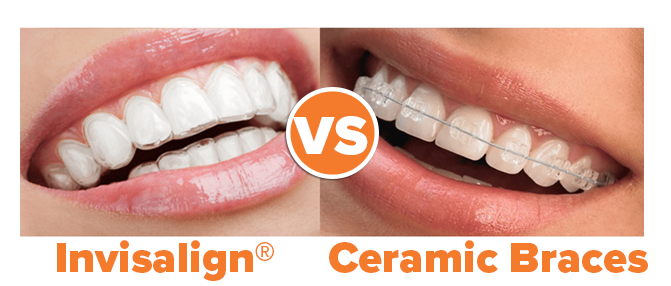Leading Reasons to Pick Invisalign Over Other Orthodontic Treatments
Leading Reasons to Pick Invisalign Over Other Orthodontic Treatments
Blog Article
Invisalign vs. Standard Dental braces: Which Choice Is Right for You?
When taking into consideration orthodontic therapy, the selection between Invisalign and standard dental braces provides numerous important elements that warrant careful analysis. Invisalign supplies a very discreet alternative with removable aligners, while standard braces give an extra noticeable yet effective solution for serious misalignment.
Overview of Therapy Options
&srotate=0)
In comparison, standard braces include metal brackets and wires that are bound to the teeth. This approach uses continual stress gradually to accomplish positioning. While efficient for intricate orthodontic problems, typical dental braces call for regular brows through for adjustments and can posture obstacles in preserving dental hygiene because of the trouble of cleansing about wires and brackets.
Both alternatives have their advantages, and the selection commonly rests on specific oral problems, way of living choices, and client conformity. Inevitably, consulting an orthodontic specialist is critical for establishing the most suitable therapy plan tailored to private needs. Understanding the subtleties of each alternative can dramatically influence the total success of orthodontic treatment.
Aesthetic Factors To Consider
A substantial factor influencing the choice in between Invisalign and standard dental braces is the aesthetic charm each treatment uses. Invisalign aligners are crafted from clear plastic, making them virtually undetectable when worn. This very discreet appearance is especially appealing to grownups and teenagers who may really feel uncomfortable regarding their orthodontic therapy. The capacity to maintain a natural smile throughout the alignment procedure can considerably enhance the individual's confidence in specialist and social settings.
On the other hand, traditional dental braces consist of metal braces and wires, which can be a lot more visible. While advancements in orthodontic innovation have actually resulted in the development of smaller sized braces and tinted elastics, standard dental braces still preserve an even more obvious profile. For some people, the visibility of dental braces might hinder them from seeking needed treatment.
Eventually, the option between Invisalign and typical dental braces may depend upon personal choices concerning aesthetics. Patients that prioritize discernment commonly favor Invisalign, while those who are less concerned regarding exposure may go with standard braces. Recognizing the aesthetic implications of each alternative is crucial for making an informed decision that straightens with one's way of life and preferences.
Comfort and Convenience

In terms of comfort, Invisalign aligners are detachable, allowing clients to appreciate their preferred foods without limitation and keep optimum dental health. Cleaning and flossing are simplified, as the aligners can be gotten during these routines, whereas traditional braces call for mindful maneuvering around wires and braces.
In addition, Invisalign's modern system enables for less orthodontic visits. Clients typically obtain several sets of aligners at as soon as, which can enhance the treatment procedure and decrease time invested in the orthodontist's chair. On the other hand, standard braces demand regular adjustments, making them less convenient for those with active timetables. Invisalign. On the whole, the comfort and comfort of Invisalign make it an enticing selection for lots of individuals looking for orthodontic treatment.
Treatment Duration and Performance
While both Invisalign and find more information traditional dental braces work in correcting dental misalignments, the duration of treatment can differ substantially between the two options. Generally, Invisalign treatment can take anywhere from 12 to 18 months, depending upon the intricacy of the situation. The clear aligners work by progressively shifting teeth right into their wanted placements, and routine follow-ups with an orthodontist help guarantee development remains on the right track.
On the other hand, typical dental braces usually call for a longer dedication, generally varying from 18 months to three years. This results from their set nature and making use of braces and cables, which can be extra effective for extreme read misalignments and complex cases (Invisalign). The treatment performance of conventional braces is well-documented, as they enable accurate modifications and better control over tooth motion
Inevitably, the option between Invisalign and typical dental braces may depend upon both the awaited therapy duration and the particular dental concerns at hand. Consulting with an orthodontist is vital, as they can offer tailored recommendations based upon individual needs, ensuring the picked method lines up with desired outcomes and timeframes.
Expense Contrast and Insurance Options
Price plays a substantial duty in the decision-making procedure for individuals taking into consideration orthodontic therapy, whether choosing Invisalign or traditional dental braces. Usually, the price of Invisalign varieties from $3,000 to $8,000, while conventional dental braces commonly set you back in between $2,000 and $6,000. Elements affecting these expenses consist of the intricacy of the situation, the period of therapy, and geographical area.
Lots of dental insurance plans offer partial protection for orthodontic therapies, yet the specifics can differ commonly. Usually, standard braces might be much more regularly covered by insurance coverage plans contrasted to Invisalign, which some insurance companies categorize as a cosmetic procedure.
Additionally, a number of orthodontic methods offer versatile payment plans, making both therapy choices extra available. People need to ask about prospective financing options and price cuts for upfront repayments. Assessing the total expense, consisting of insurance coverage advantages and payment strategies, is vital for making a notified choice that aligns with both aesthetic preferences and spending plan factors to consider.

Verdict
In summary, the choice in between Invisalign and traditional braces pivots on numerous variables, including aesthetic preferences, convenience, therapy period, and cost. Invisalign supplies a discreet, removable alternative that facilitates dental health and dietary adaptability, while look at this web-site typical dental braces may be preferable for complicated oral issues and frequently come with a reduced rate point. Ultimately, appointment with an orthodontist is important to analyze individual scenarios and determine one of the most suitable therapy alternative for achieving optimal dental alignment.
When considering orthodontic therapy, the choice between Invisalign and standard braces presents a number of essential variables that merit mindful examination.Comparing Invisalign and conventional dental braces discloses distinctive therapy alternatives for orthodontic improvement.While both Invisalign and conventional dental braces are reliable in fixing oral misalignments, the duration of therapy can vary dramatically in between the 2 alternatives.Cost plays a substantial function in the decision-making process for people taking into consideration orthodontic treatment, whether opting for Invisalign or standard braces.In summary, the choice in between Invisalign and traditional dental braces hinges on multiple factors, consisting of aesthetic preferences, convenience, treatment duration, and price.
Report this page